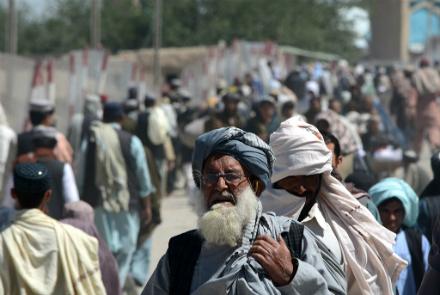The Afghanistan Statistics and Information Authority (NSIA) has estimated the countryís population to be 32.9 million in 2019-20, a slight increase from 2018ís estimated 31.6 million.

According to the statistics, 51 percent (16.8 million) of the population is male and 49 percent (16.1 million) of it is female.
Also, 7.7 million of the population live in cities, and an estimated 23 million live in rural areas--with the Kochi (nomad populations) numbering 1.5 million, according to the report.
The dependent-age population (below 20 years old and above 64 years old) is 16.2 million, while 15.3 million are under 15 years of age, says the NSIA, with 900,000 people above 64 years old.
The number of refugees returned from Pakistan, Iran and other countries was 8,079 in 2019.
The report measured the level of education for 334,681 civil service employees working in the government, finding that 430 had a Ph.D., 7,035 had a masterís degree, and 38,721 had a bachelorís degree, with 288,495 employees having an education below a BA/BSc level.
The annual report cited the Ministry of Education numbers indicating that 10.2 million students were enrolled in school in 2019, including primary, secondary and high schools, as well as vocational high schools, technical vocational institutes, teacher training institutes, religious schools and Afghan students abroad.
There are over 9.7 million students enrolled in government educational institutions and 553,966 students in private educational institutions, according to the report.
There are 241,797 schoolteachers, including 211,454 serving in government schools and 30,343 in the private institutions, said the NSIA.
The data shows that there are 128 private and 38 government universities and other higher education institutions. Three private institutions were closed in 2019.
There are 18,909 professors in government and private universities, with 2,599 women and 16,310 men. This shows a 4.5 percent increase in the number of professors compared to 2018.
The country has 2,745 health centers, according to the data, up from 2,408 health centers in 2018.
LINK: https://www.ansarpress.com/english/18034
TAGS:






























 Farkhunda Buried, Ghani Appoints Fact-Finding Team
Farkhunda Buried, Ghani Appoints Fact-Finding Team




